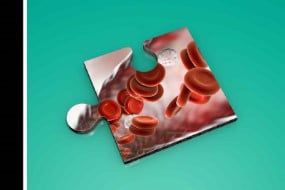Heart Health: A Beginner’s Guide to Cardiovascular Disease
Learn more about how your heart works, the causes of heart disease and how to keep your heart healthy.
Who is the course for?
This course is aimed at anyone with an interest in how the heart works and the diseases that commonly affect it. It will help if you have a basic understanding of human biology, but we’ll explain things in a way that will be easy for those who are unfamiliar with the subject. If you get stuck, you can always ask questions in the comments and other learners may be able to help you.
Healthcare practitioners may also enjoy this as a gentle refresher or resource to share with patients.
What topics will you cover?
Week 1:
Introduction to the structure and function of the cardiovascular system, consisting of the circulatory system and the heart as a pump
The circulatory system – including the different blood vessels, the blood cells and plasma
The structure of the heart – including its four chambers, the major blood vessels that enter and exit the heart, the smaller blood vessels that supply the heart muscle with vital blood and oxygen and the heart valves that regulate the flow of blood through the heart
The cardiac cycle and how this relates to an ECG (electro cardiogram) Investigation of the structure of the heart through a hands-on practical activity
Week 2:
Introduction to the process of atherosclerosis
What is angina?
Introduction to haemostasis and thrombosis
What is a heart attack?
What is a stroke?
Investigation of the effects of thrombosis through a hands-on practical activity
Week 3:
What is heart failure?
What is hypertension?
What is valvular disease?
What are arrhythmias?
Investigation of the effects of heart failure through a hands-on practical activity
Week 4:
Non-modifiable risk factors for cardiovascular disease including age, gender and genetics
Modifiable risk factors for cardiovascular disease including smoking, stress, cholesterol, obesity, diet, and physical activity
Lifestyle choices that can be made to try and reduce the risk of cardiovascular disease
Calculating the risk of cardiovascular disease with the QRisk Cardiovascular * Disease Risk Calculator
Investigation of one’s own life style choices
What will you achieve?
By the end of the course, you‘ll be able to…
Describe the structure and function of the cardiovascular system, including the circulatory system and heart
Describe the basis of several cardiovascular diseases including heart attacks, strokes, hypertension and heart failure
Evaluate the various risk factors that can contribute towards increasing a person’s risk of cardiovascular disease
Discuss some of the lifestyle choices that we can make to try and reduce our risk of cardiovascular disease
Apply theoretical knowledge and investigate a topic through practical activities
Investigate and process data
User Reviews
Be the first to review “Heart Health: A Beginner’s Guide to Cardiovascular Disease”
You must be logged in to post a review.






There are no reviews yet.